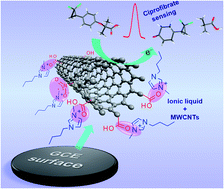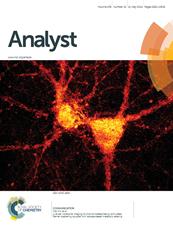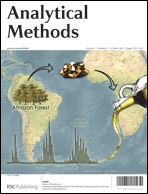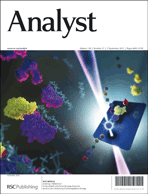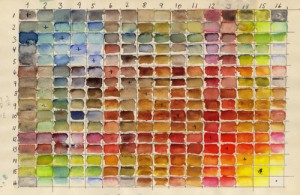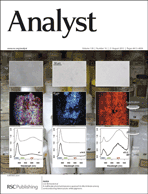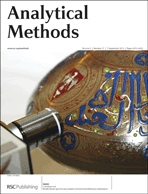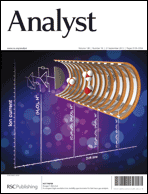Analyst and Analytical Methods recently joined forces to produce a web themed issue on Analytical Sciences in Brazil, highlighting the growth of the field of analytical science in Brazil with the aim to provide a showcase for some of the best researchers in this area.
As an extra special feature of this issue, please read below the introductory Editorial from Guest Editors, Professor Ivo M. Raimundo Jr and Professor Boris Mizaikoff, translated into Portuguese.
Analytical Sciences in Brazil – Editorial
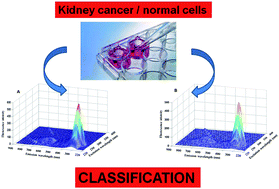
O tópico deste número temático é extremamente significativo, uma vez que enfatiza a importância da química analítica em um cenário científico global. Por um bom período, a química analítica foi considerada uma área periférica da química e os químicos analíticos eram vistos apenas como provedores de dispositivos e métodos para análises qualitativas e quantitativas demandadas, por exemplo, pelas indústrias (controle de qualidade e de processos), laboratórios clínicos e monitoramento ambiental. Entretanto, durante as últimas décadas a “química analítica convencional” sofreu uma notável evolução, transformando-se em “ciências analíticas modernas”, que pode ser, não totalmente, mas em parte certamente atribuída aos avanços da microeletrônica, microfabricação, nanomateriais/nanotecnologia e quimiometria. Atualmente, as ciências analíticas modernas amadureceram, tornando-se uma disciplina de pesquisa altamente interdisciplinar, ágil e transformadora, abordando, por exemplo, de tecnologia analítica de processos à análise de uma única célula, de monitoramento ambiental à química verde, de diagnósticos clínicos/médicos ao sensoriamento (bio)químico e de análise de composição de materiais à quantificação de contaminantes em alimentos. Adicionalmente, além de determinar “o que” e “quanto” existe de um constituinte-alvo, a química analítica contemporânea adicionou os domínios espaciais, temporais e de especiação à estes parâmetros, isto é, “onde”, “quando” e “como” um analito está presente dentro de uma determinada matriz. Em outras palavras, a Química Analítica evoluiu para uma disciplina chave da química moderna, movendo-se de sua periferia para o seu núcleo central.
Qual a situação das Ciências Analíticas no Brasil? Esta foi a questão que fizemos quando foi lançada a ideia de um número especial neste tema. O Brasil está ainda focando em “química analítica” ou está contribuindo ativamente com desenvolvimentos inovadores em “ciências analíticas”? Enquanto esta questão pode ser certamente respondida sob diferentes aspectos e considerações, a resposta da comunidade de química analítica brasileira fala por si mesma: dois meses após a data limite para submissão de artigos para este número especial, 38 manuscritos haviam sido aceitos para publicação, os quais documentam de forma notável a relevância, a vitalidade e a inovação das ciências analíticas no Brasil. Mais importante e para particular satisfação dos Editores, em vez de regiões específicas – e provavelmente favorecidas financeiramente – dentro do Brasil, as contribuições têm sido submetidas de norte a sul e de leste a oeste do país. Por exemplo, enquanto as regiões ao norte e à oeste eram certamente consideradas “distantes” dos epicentros da ciência, isto mudou dramaticamente durante os últimos trinta anos, assim como a química analítica. De uns poucos Programas de Pós-Graduação em universidades no sul e sudeste, o cenário científico expandiu-se para proporcionar uma ampla multiplicidade, espalhada por todo o país. Este imenso esforço de pesquisadores de diferentes estados, que foram as sementes destes novos programas, hoje reflete na diversidade e força do ensino de química por todo o Brasil. Portanto, a resposta é claramente “sim”. O Brasil dedica-se e contribui para as ciências analíticas modernas, acima e além das contribuições publicadas neste número especial!
Finalmente, os Editores deste número temático – Prof. Ivo M. Raimundo Jr. (Universidade Estadual de Campinas, Brasil) e Prof. Boris Mizaikoff (Universidade de Ulm, Alemanha) – gostariam de agradecer profundamente May Copsey (Editora) e Rebecca Brodie (vice-editora) por tratar de todos os detalhes referentes à esta edição, a qual não seria possível sem suas generosas assistências. Além disso, gostariam também de agradecer o Instituto Nacional de Ciências e Tecnologias Analíticas Avançadas, que forneceu as bases para esta iniciativa. Por fim, mas não menos importante, gostariam de agradecer todos os pesquisadores brasileiros que contribuíram para este número, possibilitando que o Analyst e o Analytical Methods proporcionem aos seus leitores um sabor especial das Ciências Analíticas atualmente produzidas no Brasil!
To read some of the exciting research being performed in Brazil, please click through and check out the web themed issue.



